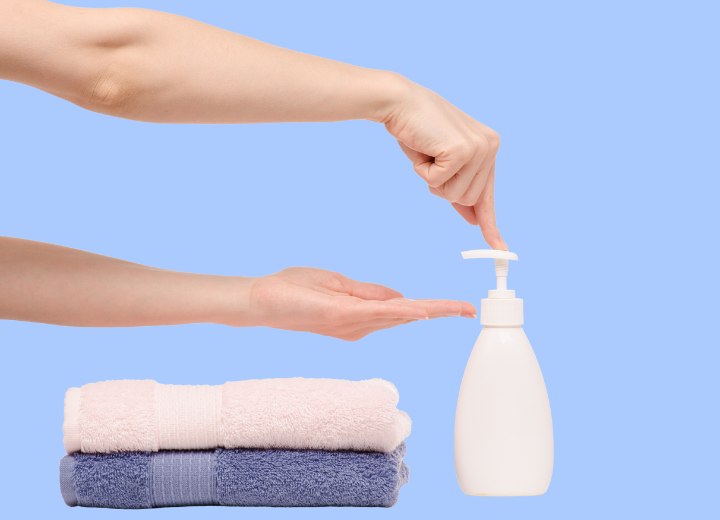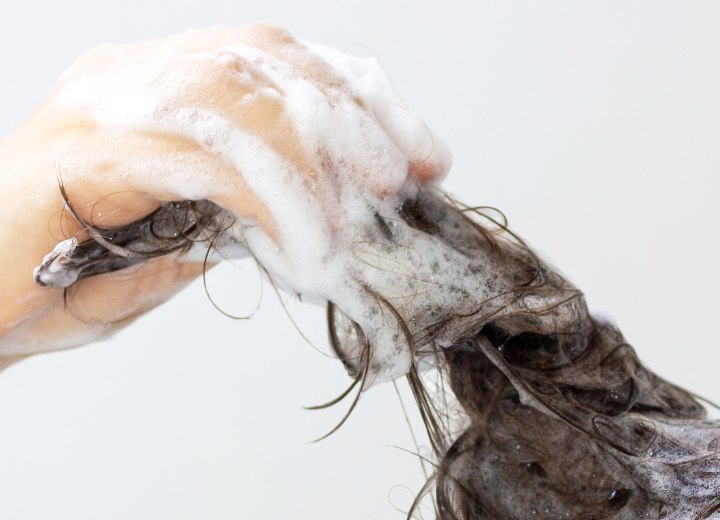How to Shampoo a Bedridden or Mobility-Impaired Person

Dry Shampoo
Dry shampoo is typically packaged as an aerosol spray that contains an oil-absorbing ingredient that can be brushed out of the hair once it has done its work. It’s typically used with those who have oily hair or straight-to-wavy hair types.
No-rinse Shampoo
No-rinse shampoos are liquid-based, and usually come in a foaming formulation that is applied liberally to the hair and allowed to dry on its own without rinsing. They often contain alcohol or other quick-drying ingredients as well as leave-in conditioners to soften the hair and make it more manageable. These are used more with individuals with wavy to curly hair types and those whose hair tends to be dry or flyaway.
However, while these products are great for the short-term, after a while, they seem less effective as the hair begins to develop buildup. When this happens, you want to be able to give the hair a thorough cleansing. To do this, you need to look at the process a little differently than you would normally consider it.
Shampooing the Hair
Shampooing the hair consists of two primary stages: Cleaning and Rinsing. With the able-bodied person, applying shampoo to wet hair while they recline over the lip of a shampoo sink is simple, and is easily followed by a thorough rinse of the foamy lather. With someone who cannot be positioned over a sink, you have to consider the issue carefully and work around the constraints. Here are a few things to make the process easier for you. You need:
• 2 spray bottles (one of which should hold at least 1 liter of fluid)
• Hair clips (to control the hair should you need to work on smaller sections at a time)
• 1 wide-tooth comb
• 1 fine-tooth comb
• 1 shampoo cape (available from a beauty supply store and very inexpensive)
• Several towels (depending on the length of the hair – with at least one hand towel)
You want to be sure to drape the shampoo cape around the individual’s neck using the hand towel against the skin so that you have a barrier to absorb any dripping moisture from the rest of this process. Lay one of the extra towels on hand on the side you are working on to catch any drips. I know this may seem excessive, but you’ll be grateful that you don’t have to change wet bedding afterward, and so will the person you’re shampooing.
Next, use your wide-toothed comb to comb through the hair and remove any tangles and snarls gently. Once any tangles are gone, divide the hair into sections depending on the length of the hair (for longer hair, use smaller sections), and use your clips to secure the sections you aren't working on out of your way.

Spray the shampoo solution onto the section of hair you are working on (start at the top of the head for efficiency's sake) and gently massage the scalp to generate some lather. Work your way from the scalp to the ends of the hair, then gently blot the hair with a towel.
Next, use your clear water spray bottle to rinse away the lather, and continue blotting with the towel to control the moisture. Once you've "cleaned" the first section, comb it out carefully and clip it out of the way.
Continue with this process, working from section to section, from the top of the head to the nape of the neck until you've cleaned all the areas of the hair. With careful planning and a little advance preparation, you can easily get the hair clean and ready to style. And believe me, the person you are helping will be very grateful for your attentions and care.
NOTE: You may need to go back over the head again with your clean water rinse in order to catch bits of lathering that resulted from overlapping while working with the various sections. Be sure you do so, as needed, since some shampoos can irritate the skin if left to dry on the person's scalp.
©Hairfinder.com
See also:
How to Cut Hair for an Individual who is Bedridden
How to Style the Hair of a Bedridden Individual
Hair funnels to shampoo elderly and disabled persons who cannot be reclined